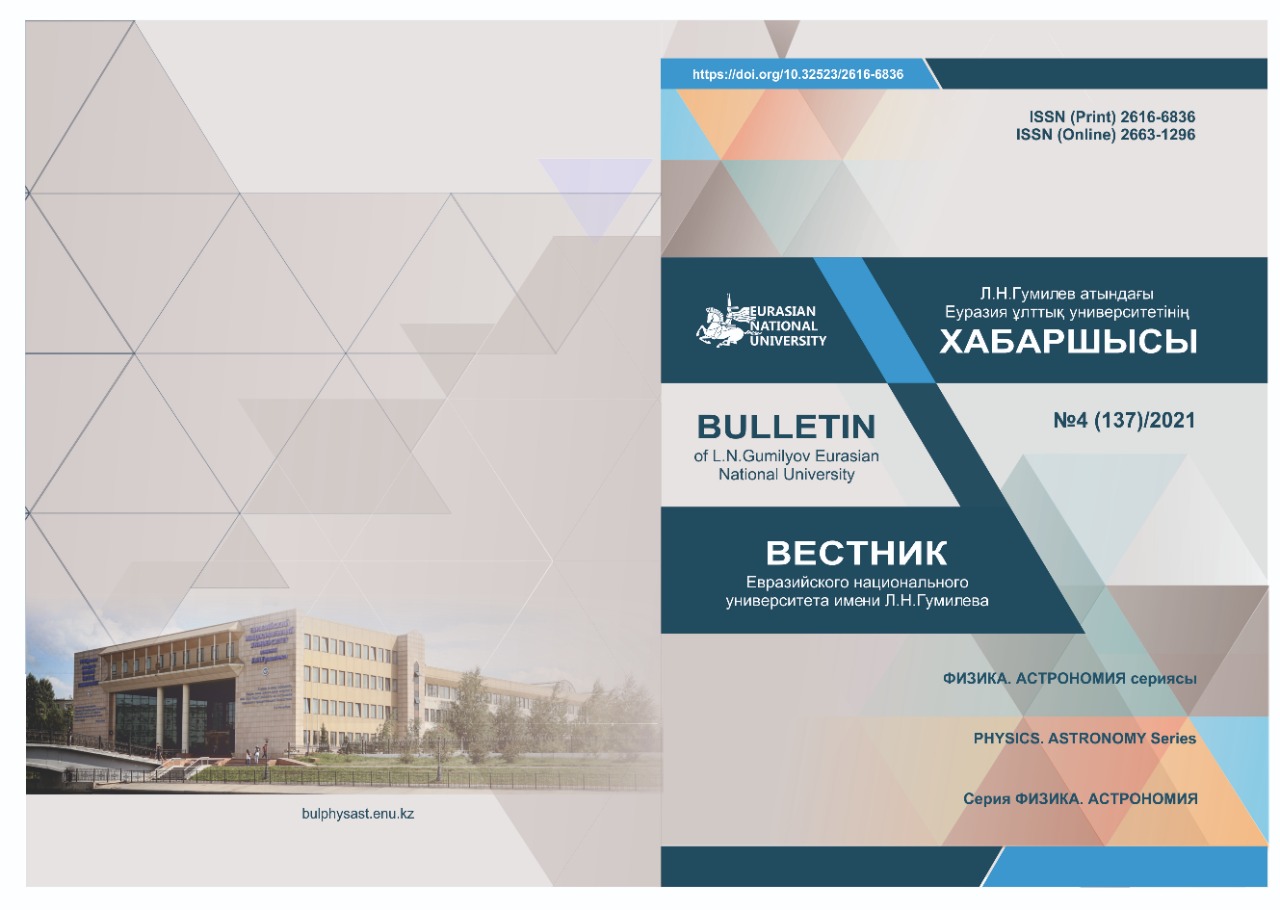The limits of the PIXE method for excitation of target atoms by heavy ions
Views: 199 / PDF downloads: 107
DOI:
https://doi.org/10.32523/2616-6836-2020-132-3-14-24Abstract
. As a result of the studies, the limits of the PIXE method were measured by the irradiation of a 12- µ m thick PET Hostaphan film with accelerated beams of C 2+ , O 2+ , N 2+ , Ne 3+ , Ar 6+ , Kr 13+ and Xe 20+ with an energy of 1 MeV/nucleon and beams of C 2+ , O 3+ , N 3+ , Ne 4+ , Ar 7+ , Kr 14+ and Xe 22+ with an energy of 1.6 MeV/nucleon. The limits of determination were calculated for the K-lines of the chemical elements Ti, Cr, Cu, Zn, Zr, Nb, Mo, Ag, Cd, In, Sn, Sb and L-lines of Zn, Zr, Nb, Mo, Ag, Cd, In, Sn, Sb, Ta, W, Pb, Bi. It was found that the highest sensitivity is achieved for the accelerated particle energy of 1.6 MeV/nucleon. In this case, for elements with Z <30 and Z> 51, the optimal ion for the analysis of the microelement composition of the sample based on the PET film is neon, and for elements in the range 30 ≤ Z ≤ 51 - are oxygen. The results can be used in the future to develop a quantitative analysis of the elemental composition of air aerosols on a heavy ion accelerator DC-60 using a PET film as a filter matrix. They allow you to optimize the choice of the type of accelerated particle and its energy to obtain the best limits for determining the PIXE method.










